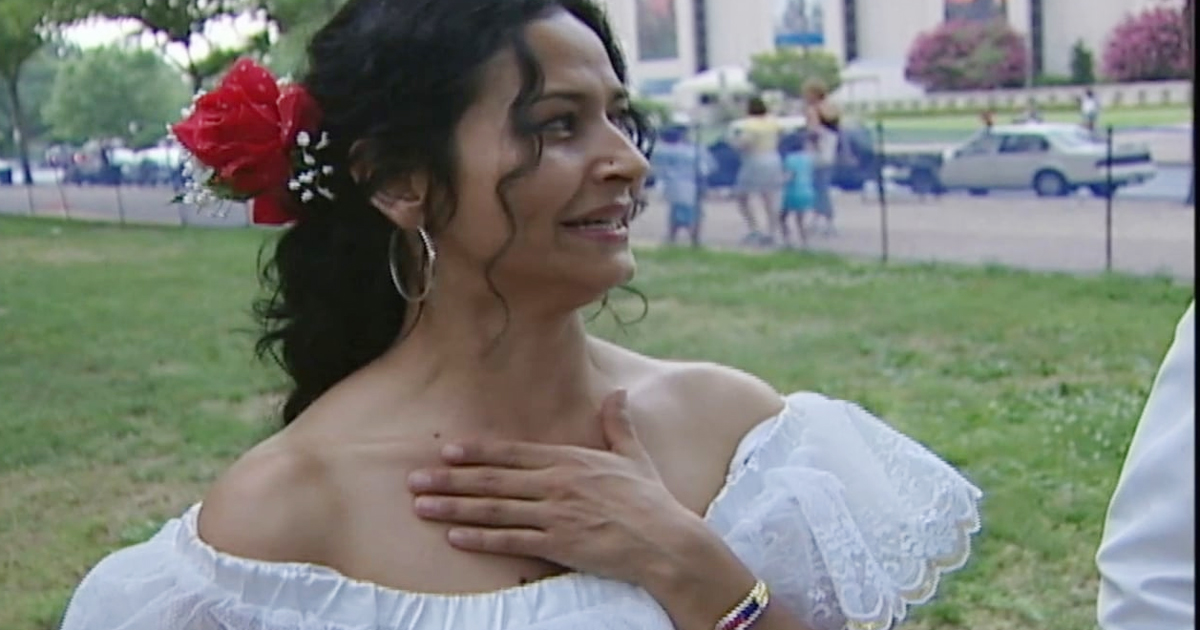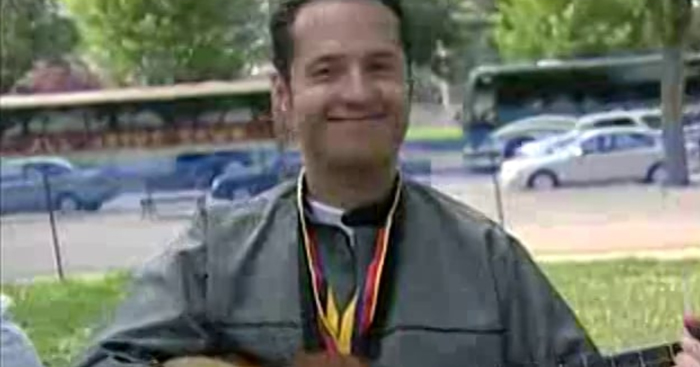Ana Veydó
The plains region is home to one of Colombia's most prominent and engaging musical traditions, the joropo. The joropo' s driving rhythm and percussive stringed-instrument sound draw from centuries-old Spanish, African, and New World musical traditions. The joropo repertoire revolves around song and instrumental music. Also known as música llanera ( plains music), joropo music was created by ranching people with a love of cattle, horses, music, and dance. Men have long sung to accompany their tasks of herding cattle and milking. Consequently, joropo song has a masculine character, and its themes draw from the male-dominated cattle-herding lifestyle. Yet today, one of the most reknowned joropo singers is a woman: Ana Veydó.

Born and raised in the plains region of eastern Colombia, where her parents tended cattle, Ana Veydó Ordóñez loved to listen to joropo music on the radio. She was especially attracted to the fast-driving style of singing, the golpe recio. As a teenager, Ana moved to Bogota and embarked on a career in music. In Bogota, she encountered a lively música llanera scene and was able to take vocal classes. By fifteen, she was competing in festivals.
Recently, it has become more acceptable for a young South American woman to have a career in music. "Before, it was seen as a tragedy," Ana notes. "My mom said to me, 'How are you going to dedicate yourself to this and not to studying for another career?'" But Ana persevered and developed a successful career singing the golpe recio style of joropo music.
While women have traditionally been encouraged to sing songs with emotional or romantic themes, Ana is one of the few female singers that follow the recio ( robust, coarse) style of singing usually associated with the male voice. The women who sing in this tradition are called cantantes recias. "I have liked the men's repertoire more," Ana comments. "It seems stronger. " Ana powerfully interprets songs from this traditional repertoire such as "Un llanero de verdad."

The joropo has two veins: the hard-driving golpe, and the slower, more lyrical pasaje. Golpe ( from golpear " to hit, to strike") refers to the percussive strummed patterns of the cuatro ( small, four-stringed guitar). There are at least eighteen common types of golpe, each with its own name and distinctive sound. Golpes are played by instruments alone, or include singing. When sung, the singers distinguish two types: golpe con leco (golpe with leco) and golpe sin leco (golpe without leco). The former opens with a long, sustained cry ( leco), but in the latter the singer launches into the melody without the sustained opening.
Ana's dedication to the golpe recio and música llanera led her to Grupo Cimarrón. This group, founded by joropo musician Carlos Rojas Hernández, was created to offer the public an authentic representation of música llanera as it is practiced by outstanding professional musicians strongly rooted in the plains musical tradition. Of the musicians brought together for this group, Ana is the only female. In the ensemble, she sings and arranges melodies for the golpes. Although Ana has been successful, she recognizes the difficulties for women in música llanera: " The men tend to be domineering, and they want to be protective of their space. " But Ana has never given up or conformed to the social expectations of her gender.
Grupo Cimarrón is composed of nine virtuosic musicians well versed in música llanera. Yesid Benites and Hugo Molina play the pear-shaped melody guitar known as the bandola. The cuatro is strummed by Libardo Rey, and the harp is plucked by Carlos Quintero. Ricardo Zapata enlivens the harmonic and rhythmic foundation with bass lines on his acoustic bass. Filling out the group's sound are the maracas played by Omar Fandiño and the rich voices of the group's singers and copleros ( improvisers of verses). Luis Moreno and Wilton Games take turns improvising verses and adding their own vocal flair to the music. With Ana, the group recorded the 2005 Grammy-nominated album Sí, Soy Llanero: Joropo Music from the Orinoco Plains of Colombia for Smithsonian Folkways Recordings.
This album presents the essential sounds of the joropo that emerged in the 1950s. At that time the traditional music of the Colombian plains entered urban performance settings, festival competitions, and recording studios. The recording offers a sense of the joropo' s spontaneous spirit and adventurous improvisation.
The musicians on the Sí, Soy Llanero recording have stayed close to the cultural roots of their music. As many rural llaneros ( plainspeople) have migrated to the capital, Bogota, música llanera has been influenced by the sounds of urban popular music. Many of the instrumentalists from Grupo Cimarrón have been called upon to back up pop singers in the studio and onstage. Although the emergence of música llanera in the pop scene has given the genre a wider audience, llanera musicians are often restricted to certain roles and narrow structures. In Grupo Cimarrón, the musicians look outward for musical influences but maintain the spontaneity and freedom of expression that llanera music allows. The cuatro player, Libardo Rey, says of the Sí, Soy Llanero recording, "The special thing is that we really play it [ música llanera] the way we feel it, following its soul, the special flavor that this music freely produces. In commercial musics, we are a little restrained in a way from going outside a certain parameter, but [here] we can take the liberty of playing the way you are born to play, and to show a little of the special talents of each instrumentalist."




